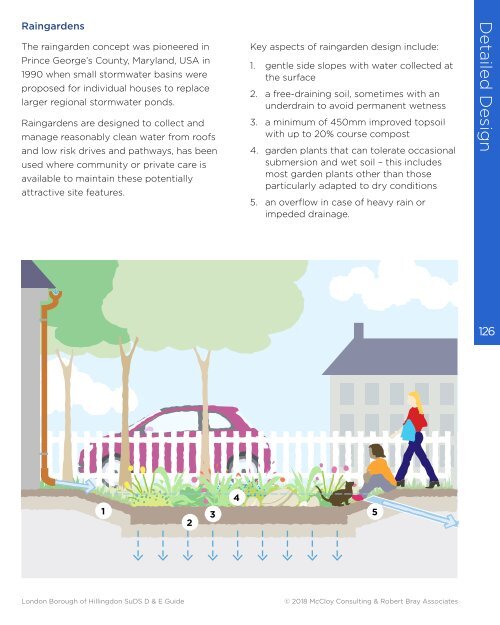Hillingdon SuDS Design & Evaluation Guide
You also want an ePaper? Increase the reach of your titles
YUMPU automatically turns print PDFs into web optimized ePapers that Google loves.
Raingardens<br />
The raingarden concept was pioneered in<br />
Prince George’s County, Maryland, USA in<br />
1990 when small stormwater basins were<br />
proposed for individual houses to replace<br />
larger regional stormwater ponds.<br />
Raingardens are designed to collect and<br />
manage reasonably clean water from roofs<br />
and low risk drives and pathways, has been<br />
used where community or private care is<br />
available to maintain these potentially<br />
attractive site features.<br />
Key aspects of raingarden design include:<br />
1. gentle side slopes with water collected at<br />
the surface<br />
2. a free-draining soil, sometimes with an<br />
underdrain to avoid permanent wetness<br />
3. a minimum of 450mm improved topsoil<br />
with up to 20% course compost<br />
4. garden plants that can tolerate occasional<br />
submersion and wet soil – this includes<br />
most garden plants other than those<br />
particularly adapted to dry conditions<br />
5. an overflow in case of heavy rain or<br />
impeded drainage.<br />
Detailed <strong>Design</strong><br />
126<br />
4<br />
1<br />
2<br />
3<br />
5<br />
London Borough of <strong>Hillingdon</strong> <strong>SuDS</strong> D & E <strong>Guide</strong><br />
© 2018 McCloy Consulting & Robert Bray Associates


